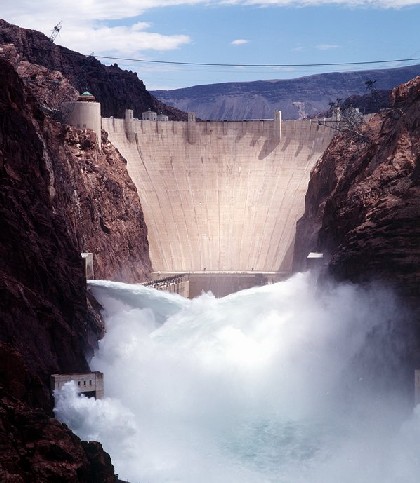Damming rivers: The physical and biological effects
A major problem for many communities worldwide is lack of freshwater. There are many pros and cons to dam construction. By installing dams over rivers the water flow can be controlled in such a way that supply of water is constant however dams can have drastic effects on aquatic fauna as downstream populations of animals are used to a certain flow of water and a dam disrupts this. Some fish, such as salmon, travel down river as juveniles and then back upstream to spawn as adults. If there are no fish ladders by dams to allow for fish movement upstream then spawning no longer occurs in the river and the salmon population dwindles. A well recorded example of this is in the Columbia River Basin in the USA. They once had salmon runs of over 15 million fish. There are over 30 dams on the tributaries of the Columbia River basin and the salmon runs are now estimated at just 500,000.
A dam stops the flow of water downstream that builds up forming a reservoir, submerging upstream habitat.
- In Belize the proposed Chalillo dam will theoretically submerge 1100 hectares of pristine rainforests and engulf the valleys of the Macal and Raspaculo rivers.
- And in India the Sardar Sarovar dam, in Narmada Valley, could displace up to 500,000 people.
The environmental impacts of dams can be severe. In some areas of the world there are plans to start dismantling dams and return natural flow levels, natural navigation and migration routes.


